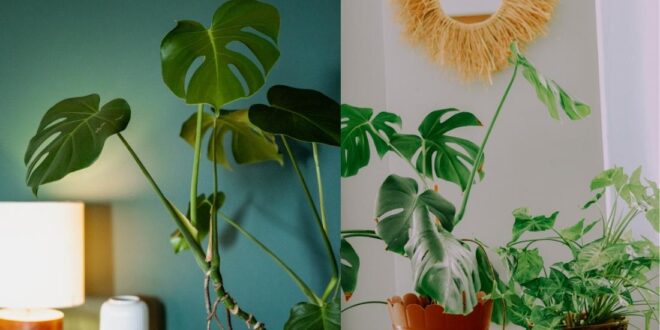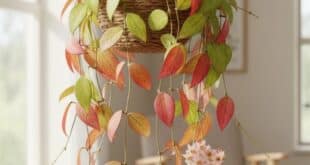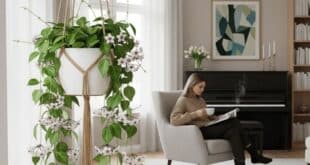Meet the Monstera Plant

The Monstera plant is one of my favorite plants as a landscape architect and one that I frequently include in my projects. The most well-known species among the public is Monstera deliciosa. Due to its harmonious fit with decor, it is often used in the decoration of hotels, restaurants, and living rooms. In fact, if you are a keen observer, you’ll notice it frequently in public institutions, hospitals, and executive offices. The Monstera plant stands out from classic plants with its perforated (fenestrated) leaves. Perhaps this is the main reason why I adore this plant so much. Its native habitat is the rainforests of Central and South America. It adds a tropical vibe to its environment. Who doesn’t love a tropical atmosphere? (Unless you’re in love with the Scandinavian vibe 😊). Don’t worry, though! It’s relatively easy to care for 😉.
Without further ado, let’s get to know the Monstera plant a little better.
A Closer Look at the Monstera Plant: Split Leaves and a Loving Embrace
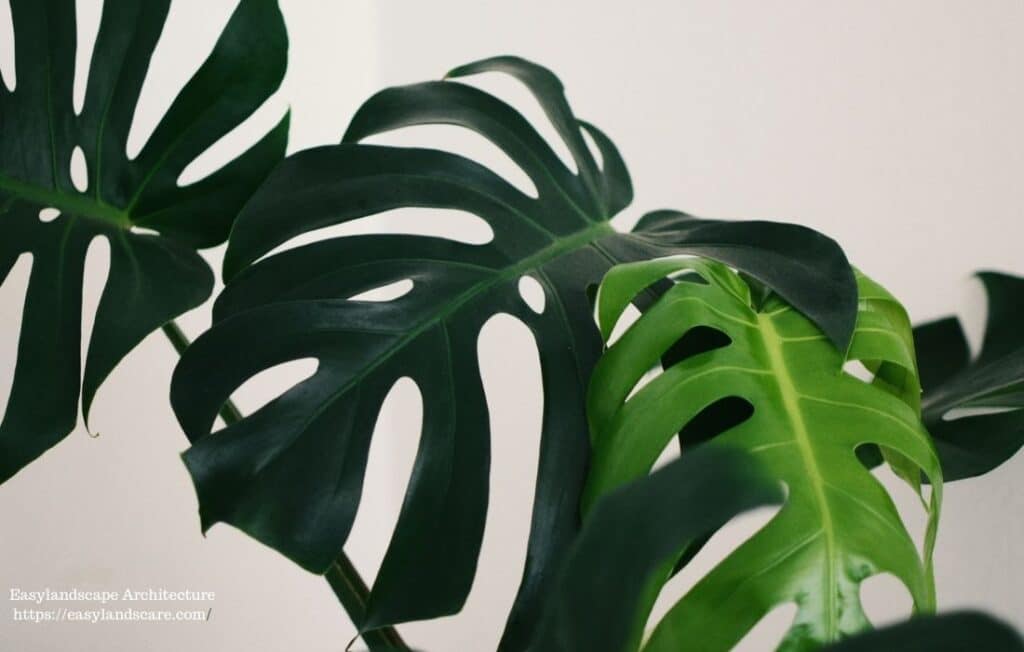
Split Leaves
One of the distinguishing features of the Monstera plant is its split leaves. As these leaves grow, the splits become more pronounced. The leaves are glossy and dark green. Let’s not forget that they also have a large structure.
This unique leaf structure, known as fenestration, is not only visually impressive but also provides a distinct advantage to the Monstera plant. Let me explain without keeping you in suspense. In its natural forest habitat, these splits/holes allow the plant to be less affected by strong winds. Additionally, sunlight passes through these splits, allowing the leaves underneath to receive more sunlight. Isn’t that fascinating?
One day, I visited a botanical garden. I was deeply impressed when I saw how a Monstera deliciosa was climbing by hugging the tree next to it. I probably fell in love with this plant at that moment.
Growing by Hugging, Hugging as It Grows: A Passionate Climber
Hugging is in the nature of Monstera plants. In their natural habitat, they climb trees by wrapping around them to reach the light. Indoors, they exhibit a similar growth habit; therefore, it is better to grow them with supports like moss poles, trellises, or similar structures that won’t compromise their natural look. If you combine these conditions with proper care techniques, your home will turn into a tropical forest. Although I will briefly touch on care techniques in this article, don’t worry—I have a detailed article on this too (Keep Your Monstera Happy: Easy Plant Care Tips).
Origins of the Monstera Plant: Rainforests of Central and South America
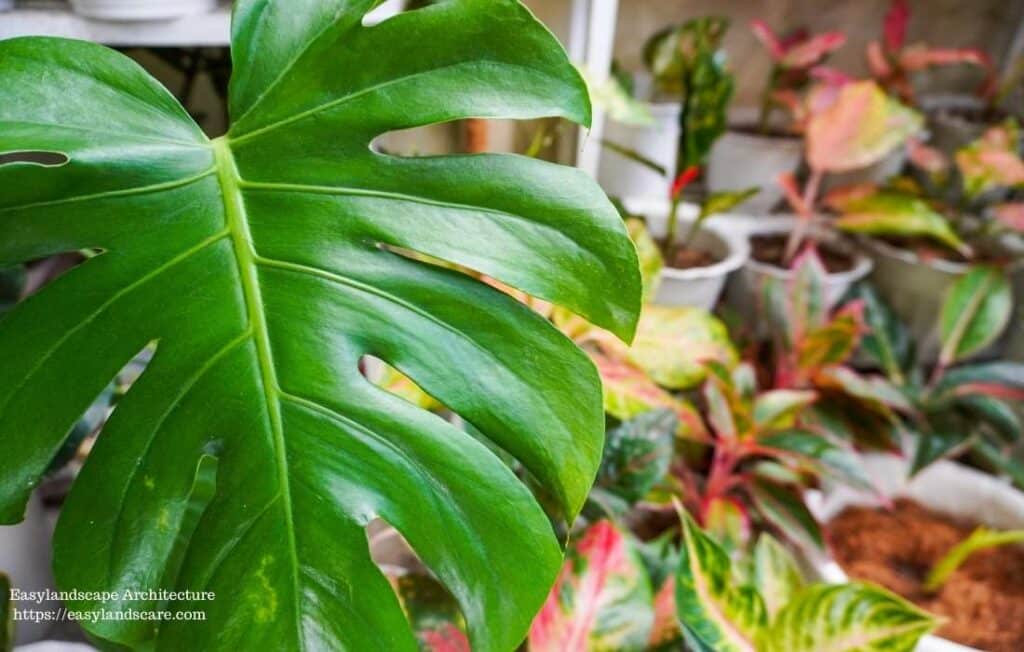
The Monstera plant originates from a region that includes Mexico, Guatemala, Belize, El Salvador, Honduras, Panama, Costa Rica, Nicaragua, and Colombia. The typical feature of the forests in this region is the presence of tropical rainforests. The environment is humid and warm. Monstera plants grow by wrapping around trees and trying to get better light.
From this, we can easily conclude that Monstera plants love warm and humid climates. They also prefer their soil to be moist. This gives us a clue about their care in indoor environments.
What Does the Name “Monstera” Mean?
The name “Monstera” comes from Latin. In Latin, “monstrum” means monster. Other commonly used names for it include:
Swiss Cheese Plant:
This name is used because its leaves resemble the holes in Swiss cheese.
Mexican Breadfruit:
Although it rarely bears fruit indoors, it can produce edible fruits in its natural habitat. For those curious about its taste, let’s explain: First, like other tropical fruits, it is delicious. Some people detect a hint of strawberry or papaya, while others sense a mix of pineapple, banana, coconut, or mango. Unripe Monstera fruits should not be consumed as they contain calcium oxalate, which can cause itching, burning, or even irritation in the mouth. You can eat them when the green scales start to fall off naturally and a pleasant tropical aroma begins to spread. The flavor is rich and aromatic.
Different Types of Monstera Plants

The most popular and well-known type of Monstera is Monstera deliciosa. However, there are other species as well. For those who are curious, let’s dive into the topic.
Popular Monstera Varieties
Monstera deliciosa:
It has deeply split and perforated leaves. The leaves are very large. It’s a true tropical plant.
Monstera deliciosa ‘Borsigiana’:
Smaller in size but grows faster. It enters the fenestration phase more quickly.
Monstera adansonii:
This species is smaller but is known as the “Swiss Cheese Vine” because of its many holes.
Monstera obliqua:
Perhaps the rarest species. Its leaves are almost entirely made up of holes and splits. This is also one of the most preferred varieties.
Monstera standleyana:
This species has no holes or splits. Its leaves remind me of X-Men’s Storm—like a beauty with part of her hair dyed.
Monstera dubia:
A unique species with heart-shaped leaves.
Leaf Variations: Holes, Variegation, and Size
The leaves of Monstera plants vary greatly. For instance, the M. obliqua species has leaves that are almost like a sieve, while M. standleyana shows unique variegation. Leaf sizes also vary depending on the species. The leaves of Monstera deliciosa can grow up to 1 meter in ideal conditions.
Growth Habits: Climbing Vines and Hanging Beauties
Many Monstera species are natural climbers, but smaller species like M. adansonii can also be grown in pots, allowing them to hang down. However, if climbing supports are provided, their development will be much healthier, adding even more beauty to their appearance.
Tips for Caring for Monstera Plants

Light Needs:
They love indirect light.
- Ideal light for Monsteras is indirect light. If exposed to direct sunlight, their leaves may burn and get damaged. In low light, fenestration efficiency decreases.
- Tip: Place your Monstera near a window that gets sunlight, but ensure the sunlight doesn’t directly hit the leaves. Use a sheer curtain if needed.
Watering Needs:
Allow the topsoil to dry between waterings.
- Check the soil periodically, and water your Monstera generously when the top 6–7 cm of soil is dry. Be careful not to overwater, as this can cause root rot.
- Personal Experience: I saved my Monstera, whose roots were about to rot due to overwatering, by transferring it to a breathable mix of orchid bark, perlite, and potting soil. Within weeks, it started producing new leaves!
Temperature and Humidity:
They love warm and humid environments.
- Monsteras thrive in temperatures between 19–28°C and high humidity. Using a humidifier during dry winters can be helpful. Another suggestion is placing the pot on a tray filled with water and pebbles.
Soil and Pot Selection:
Drainage and breathability are important.
- Make sure your pot allows airflow. A well-draining soil mix is crucial. I recommend a mix of orchid bark, perlite, coco coir, and potting soil. Don’t forget that the pot should have drainage holes.
Providing Climbing Support:
Encourage larger leaves.
- Use moss poles or natural trellises to provide climbing support. The more you encourage upward growth, the larger and more fenestrated the leaves will become.
Fertilization:
Don’t forget to fertilize during the active growing season.
- Apply liquid fertilizer every 2–3 weeks during spring and summer to support its nutrition and growth.
Common Issues with Monstera Plants: Symptoms and Solutions
Yellowing Leaves:
This is usually caused by overwatering or nutrient deficiency.
Brown/Crusty Edges:
The main reason is insufficient watering or low humidity.
Leaves Without Holes:
This can be due to two reasons: either your Monstera is in its juvenile stage or it’s not receiving enough light.
Drooping Leaves:
This is related to watering. Either you’re underwatering or overwatering.
Is the Monstera Plant Toxic? Is It Safe for Pets?
Monstera plants can be toxic to pets. The calcium oxalate crystals they contain can cause irritation or burning in the mouth. I recommend keeping your pets away from them.
Decorating Your Home with Monstera: A True Focal Point
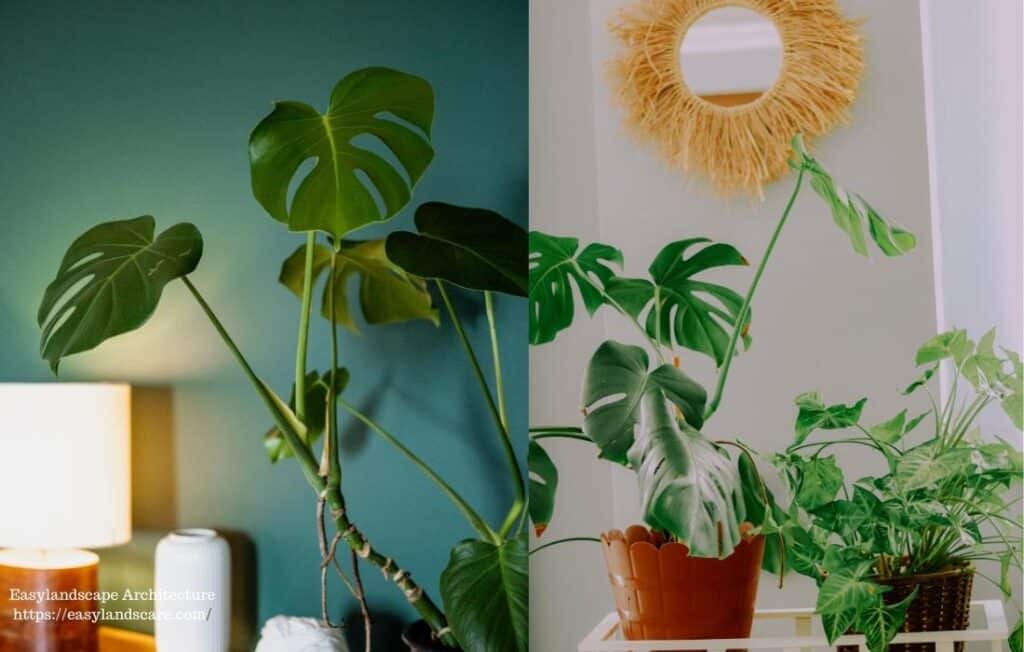
Creating a Bold Focal Area:
A mature Monstera plant adds a tropical vibe to its environment. It harmonizes with almost any object and draws attention from wherever it stands.
Enriching Vertical Space with Climbing Support:
Looking for architectural richness or a unique touch? Then encourage its growth with moss poles or trellises and enjoy the beauty it brings to the space 😉.
Adapting to Different Decor Styles:
Monstera plants blend well with any decor style, whether modern, retro, minimalist, or contemporary.
Connecting with Nature Through Biophilic Design:
Having a Monstera in your home will definitely boost your mood. It will help reduce stress and improve your overall well-being.
The Charm of Monstera Plants: A Tropical Journey

The Monstera plant is truly a favorite among plant lovers, and it offers justifiable reasons for its popularity. Whether at home or in the office, relaxing with a cup of coffee while admiring this plant will bring you peace. Would I recommend this plant to my plant-loving friends? My answer is absolutely yes. Get yourself a baby Monstera plant and enjoy watching it grow like a child over the years.
Frequently Asked Questions (FAQs)
Q1: Why isn’t my Monstera developing perforated leaves?
A: There are two reasons: it’s either in its juvenile stage or not receiving enough light. Provide climbing and light support to solve this issue.
Q2: How often should I water my Monstera?
A: Water when the top 6–7 cm of soil is dry, but avoid overwatering to prevent root rot.
Q3: Why are my Monstera’s leaves yellowing?
A: This could be due to overwatering or nutrient deficiency. Check the drainage and balance your watering routine.
Q4: Do Monsteras need moss poles?
A: Not necessarily, but if you want larger leaves and better growth, it’s recommended.
Q5: How can I increase humidity for my Monstera?
A: Use a humidifier, especially during winter, or place the pot on a tray filled with water and pebbles.
Q6: Can Monsteras grow in low light?
A: Yes, but their growth will be slower and limited.
Q7: Why are the leaf tips brown and crispy?
A: This could be due to low humidity or insufficient watering. Increase both for better results.
Q8: When should I repot my Monstera?
A: If your pot is large enough, you can just change the soil. If the pot becomes too small for the plant, repot every 1.5–2 years, ideally in spring.
Q9: Can Monstera be grown outdoors?
A: Yes, but only if the conditions are right—humid and warm. Avoid direct sunlight.
Q10: How do I clean Monstera leaves?
A: Wipe the leaves with a damp cloth to remove dust, allowing the pores to breathe and giving them a shinier appearance.

